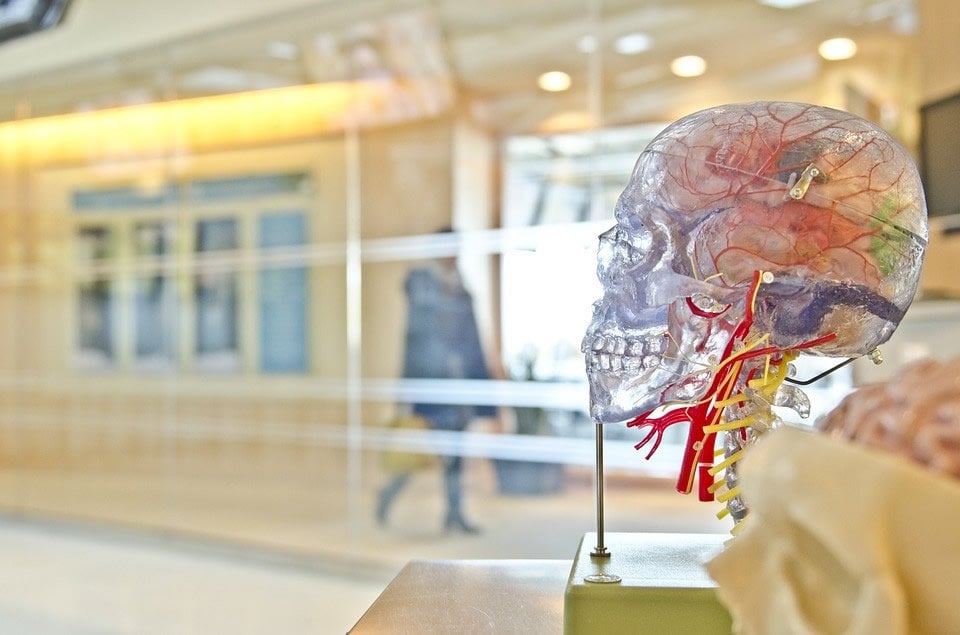Summary: A new study reveals being exposed to those who are stressed can alter our brains on a cellular level.
Source: University of Calgary.
In a new study in Nature Neuroscience, Jaideep Bains, PhD, and his team at the Cumming School of Medicine’s Hotchkiss Brain Institute (HBI), at the University of Calgary have discovered that stress transmitted from others can change the brain in the same way as a real stress does. The study, in mice, also shows that the effects of stress on the brain are reversed in female mice following a social interaction. This was not true for male mice.
“Brain changes associated with stress underpin many mental illnesses including PTSD, anxiety disorders and depression,” says Bains, professor in the Department of Physiology and Pharmacology and member of the HBI. “Recent studies indicate that stress and emotions can be ‘contagious’. Whether this has lasting consequences for the brain is not known.”
The Bains research team studied the effects of stress in pairs of male or female mice. They removed one mouse from each pair and exposed it to a mild stress before returning it to its partner. They then examined the responses of a specific population of cells, specifically CRH neurons which control the brain’s response to stress, in each mouse, which revealed that networks in the brains of both the stressed mouse and naïve partner were altered in the same way.
The study’s lead author, Toni-Lee Sterley, a postdoctoral associate in Bains’ lab said, “What was remarkable was that CRH neurons from the partners, who were not themselves exposed to an actual stress, showed changes that were identical to those we measured in the stressed mice.”
Next, the team used optogenetic approaches to engineer these neurons so that they could either turn them on or off with light. When the team silenced these neurons during stress, they prevented changes in the brain that would normally take place after stress. When they silenced the neurons in the partner during its interaction with a stressed individual, the stress did not transfer to the partner. Remarkably, when they activated these neurons using light in one mouse, even in the absence of stress, the brain of the mouse receiving light and that of the partner were changed just as they would be after a real stress.
The team discovered that the activation of these CRH neurons causes the release of a chemical signal, an ‘alarm pheromone’, from the mouse that alerts the partner. The partner who detects the signal can in turn alert additional members of the group. This propagation of stress signals reveals a key mechanism for transmission of information that may be critical in the formation of social networks in various species.

Another advantage of social networks is their ability to buffer the effects of adverse events. The Bains team also found evidence for buffering of stress, but this was selective. They noticed that in females the residual effects of stress on CRH neurons were cut almost in half following time with unstressed partners. The same was not true for males.
Bains suggests that these findings may also be present in humans. “We readily communicate our stress to others, sometimes without even knowing it. There is even evidence that some symptoms of stress can persist in family and loved ones of individuals who suffer from PTSD. On the flip side, the ability to sense another’s emotional state is a key part of creating and building social bonds.”
This research from the Bains lab indicates that stress and social interactions are intricately linked. The consequences of these interactions can be long-lasting and may influence behaviours at a later time.
In addition to Sterley and Bains, the paper’s other authors are Dinara Baimoukhametova, Tamás Füzesi, Agnieszka Zurek, Nuria Daviu, Neilen Rasiah and David Rosenegger.
Funding: The study was made possible through the generous contribution of longtime HBI donor Mr. Sanders Lee.
The research was supported by several funding sources including the Canadian Institutes for Health Research, Brain Canada, and Alberta Innovates.
Source: Kelly Johnston – University of Calgary
Publisher: Organized by NeuroscienceNews.com.
Image Source: NeuroscienceNews.com image is in the public domain.
Original Research: Abstract in Nature Neuroscience.
doi:10.1038/s41593-017-0044-6
[cbtabs][cbtab title=”MLA”]University of Calgary “Is Your Stress Changing My Brain?.” NeuroscienceNews. NeuroscienceNews, 8 March 2018.
<https://neurosciencenews.com/stress-brain-change-8611/>.[/cbtab][cbtab title=”APA”]University of Calgary (2018, March 8). Is Your Stress Changing My Brain?. NeuroscienceNews. Retrieved March 8, 2018 from https://neurosciencenews.com/stress-brain-change-8611/[/cbtab][cbtab title=”Chicago”]University of Calgary “Is Your Stress Changing My Brain?.” https://neurosciencenews.com/stress-brain-change-8611/ (accessed March 8, 2018).[/cbtab][/cbtabs]
Abstract
Social transmission and buffering of synaptic changes after stress
Stress can trigger enduring changes in neural circuits and synapses. The behavioral and hormonal consequences of stress can also be transmitted to others, but whether this transmitted stress has similar effects on synapses is not known. We found that authentic stress and transmitted stress in mice primed paraventricular nucleus of the hypothalamus (PVN) corticotropin-releasing hormone (CRH) neurons, enabling the induction of metaplasticity at glutamate synapses. In female mice that were subjected to authentic stress, this metaplasticity was diminished following interactions with a naive partner. Transmission from the stressed subject to the naive partner required the activation of PVN CRH neurons in both subject and partner to drive and detect the release of a putative alarm pheromone from the stressed mouse. Finally, metaplasticity could be transmitted sequentially from the stressed subject to multiple partners. Our findings demonstrate that transmitted stress has the same lasting effects on glutamate synapses as authentic stress and reveal an unexpected role for PVN CRH neurons in transmitting distress signals among individuals.







